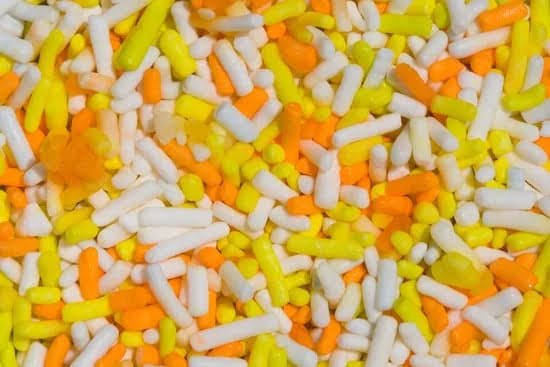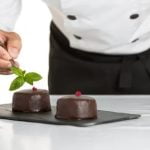Are you ready to learn how to decorate two-tier cake for your next special occasion? Two-tier cakes are becoming increasingly popular for weddings, birthdays, and other celebrations due to their elegant appearance and the ability to serve a larger number of guests. In this article, we’ll walk you through the step-by-step process of creating a stunning two-tier cake that will be the centerpiece of any event.
When it comes to planning and preparing for a two-tier cake, there are several key factors to consider. From selecting the right cake flavors and sizes to ensuring proper alignment and stability when stacking the tiers, careful planning is essential for a successful result. We’ll provide you with expert tips on how to make these important decisions and preparations.
Once the cake tiers are stacked and properly aligned, it’s time to move on to the decorating process. From crumb coating to icing, frosting, fondant decoration, piping techniques, and adding finishing touches such as edible flowers or pearls, we’ll cover every aspect of creating a beautifully decorated two-tier cake. Whether you’re a beginner or an experienced baker looking for new inspiration, our detailed guide will help you achieve professional-looking results for your next special occasion.
Planning and Preparing
When it comes to decorating a two-tier cake, selecting the right cake flavors and sizes is crucial to the success of your creation. The flavor you choose can greatly impact the overall experience of your cake, so it’s important to consider the preferences of the intended guests. Additionally, ensuring that your cake tiers are appropriately sized will guarantee a balanced and visually appealing finished product.
Choosing Cake Flavors
One important consideration in planning for a two-tier cake is selecting the right flavors. It’s best to choose flavors that complement each other rather than clash. For example, pairing a chocolate tier with a raspberry tier can create a harmonious balance of rich and tangy flavors. Another approach is to select one tier as a traditional flavor, such as vanilla or chocolate, and another as a more unique option like lemon or red velvet.
Selecting Cake Sizes
Another essential aspect of planning for a two-tier cake is selecting appropriate cake sizes. The size of each tier should be proportional to one another in order to achieve an aesthetically pleasing look. When choosing sizes, consider the number of servings needed and layer height preferences. A common rule of thumb is to have smaller sizes on top and larger sizes on bottom – this provides structural stability while also enhancing visual appeal.
Consideration for Special Dietary Needs
Finally, when planning for your two-tier cake, it’s important to take into account any special dietary needs or restrictions that may apply to your guests. With increasing numbers of people having allergies or dietary restrictions, it’s worth considering options for gluten-free, dairy-free, or vegan cakes in addition to traditional options. By offering inclusive choices, you can ensure that all guests are able to enjoy your beautifully decorated two-tier cake.
By carefully considering these factors during the planning phase, you can set yourself up for success in creating an impressive and delicious two-tier cake that will be remembered by all who have the pleasure of enjoying it at your special event.
Leveling and Stacking
When it comes to decorating a two-tier cake, one of the most important steps is ensuring that the tiers are properly aligned. A perfectly stacked cake not only looks impressive, but it also ensures stability and structural integrity. Here are some tips to help you achieve a flawless stacked cake:
1. Use a level: Before stacking the tiers, make sure each layer is perfectly level. You can use a long, flat-edged tool like a bench scraper or a ruler to ensure that the top surface of each tier is even.
2. Support system: It’s important to have a sturdy support system in place to prevent the top tier from sinking into the bottom tier. You can use dowels or cake pillars as support structures between the tiers.
3. Centering: When stacking the tiers, make sure to center each layer on top of the other. This will give your cake a polished and professional look.
Following these tips will help ensure that your two-tier cake is properly aligned and ready for the next step in the decorating process.
Now that you’ve mastered leveling and stacking your two-tier cake, it’s time to move on to the next step in creating a stunning and delicious masterpiece. In the next section, we’ll cover how to create a smooth base for icing and fondant with crumb coating before moving on to covering the tiers with beautiful icing techniques.
Crumb Coating
Before moving on to the fun part of decorating your two-tier cake, it’s essential to ensure that you have a smooth base to work with. Crumb coating is a crucial step in the cake decorating process, as it helps create an even surface for both the icing and fondant. To crumb coat a two-tier cake, you’ll need to start with properly leveled and stacked tiers.
To crumb coat your two-tier cake, begin by applying a thin layer of frosting all over the cake. This initial layer of frosting will help seal in any loose crumbs, creating a smooth surface for the final layer of icing or fondant. Use an offset spatula to spread the frosting evenly, making sure to cover every part of the cake tiers.
After applying the crumb coat, place the cake in the refrigerator for about 15-20 minutes to allow the frosting to set. This will make it easier to add the final layer of icing or fondant without disturbing the crumbs. Once your crumb coat is chilled and set, you can proceed with adding more frosting or fondant to achieve your desired decorative look.
| Crumb Coating Process | Details |
|---|---|
| Apply Thin Layer of Frosting | Use an offset spatula for even coverage |
| Chill in Refrigerator | Set for 15-20 minutes before adding final layer of icing or fondant |
By following these steps for crumb coating your two-tier cake, you’ll have a smooth base that’s ready for adding your favorite decorative elements and designs. The crumb coating process may seem simple but plays a significant role in achieving a professional-looking finish for your special occasion cake. Whether you’re using buttercream icing or fondant, taking the time to crumb coat your two-tier cake will ensure that your decorations look polished and flawless.
Icing and Frosting
- Crumb Coating: Before applying the final layer of icing, it is important to create a crumb coat on each tier. This involves spreading a thin layer of frosting over the entire cake to seal in any crumbs and create a smooth base. Use a offset spatula to spread the frosting evenly, making sure to cover the entire surface.
- Buttercream Icing: One of the most popular types of icing used for covering two-tier cakes is buttercream. This creamy and smooth icing is easy to work with and can be easily colored or flavored to match your desired aesthetic. Use a piping bag and large round tip to pipe the buttercream onto the cake, then use an offset spatula or bench scraper to smooth it out.
- Royal Icing: For a more firm and sleek finish, royal icing can also be used to cover the tiers of a two-tier cake. This type of icing dries hard, making it ideal for creating intricate designs and details. You can also use royal icing to create textured patterns or designs on the surface of each tier.
By using these techniques, you can ensure that your two-tier cake is covered with a beautifully frosted surface that serves as the perfect canvas for additional decorations such as fondant, piping details, or edible elements like flowers or pearls. Mastering these icing and frosting techniques is essential for creating a visually stunning two-tier cake that will be sure to impress at any special occasion.
Fondant Decoration
First, ensure that you have enough fondant to cover both tiers of the cake. Roll out the fondant on a clean, smooth surface using a rolling pin dusted with powdered sugar to prevent sticking. The fondant should be rolled into a circle larger than the diameter of each cake tier.
Once the fondant is properly rolled out, carefully lift it using a rolling pin and drape it over the first cake tier. Gently smooth the fondant over the top and sides of the tier, being careful to smooth out any wrinkles or air bubbles. Use a sharp knife to trim away any excess fondant from the bottom of the tier. Repeat this process for the second cake tier.
Now that the fundamental layers are complete, you can move forward with decorating your two-tier cake. Whether you choose to add decorative elements such as flowers or piping designs is entirely up to you. Remember that practice makes perfect when it comes to working with fondant, so don’t be afraid to experiment and have fun with your designs.
| Key Point | Details |
|---|---|
| Fondant Preparation | Roll out fondant on a clean, smooth surface using powdered sugar dusted rolling pin |
| Application Process | Drape fondant over each tier, smoothing out wrinkles and trimming excess for a seamless finish |
| Creative Freedom | Experiment with decorative elements and designs for personalized touch |
Piping Techniques
Choosing the Right Tips
When it comes to piping techniques for two-tier cakes, the first step is to select the right tips for the designs and details you want to create. For intricate designs and fine details, small round and star tips are ideal. Larger round tips can be used for creating borders and filling in larger areas with icing. It’s important to have a variety of tips on hand to achieve a range of decorative effects.
Practice and Patience
Using a piping bag may seem intimidating at first, but like any skill, it takes practice to master. Start by practicing on parchment paper or a plate before moving onto the actual cake. It’s also helpful to have a steady hand and plenty of patience when using piping bags. Remember that mistakes can be easily covered up or smoothed out with additional icing or decorations.
Creative Designs and Details
Piping techniques offer endless possibilities for creative designs and details on a two-tier cake. From delicate lace patterns to intricate floral motifs, piping allows decorators to personalize their cakes with unique touches. Some popular design options include swirled rosettes, basketweave patterns, and piped lettering for personalized messages.
As you consider how to decorate two-tier cake with piping techniques, remember that practice makes perfect. With the right tips, patience, and creativity, you can use piping bags to add stunning designs and intricate details that will impress your guests at any special occasion.
Finishing Touches
Adding the finishing touches to a two-tier cake is an essential step in creating a stunning and memorable centerpiece for any special occasion. Edible flowers, pearls, or other decorative elements can elevate the overall look of the cake and tie together the theme or color scheme of the event. Whether it’s a wedding, birthday, anniversary, or any other celebration, these final details will enhance the beauty of the two-tier cake.
When considering which edible decorations to use, it’s important to keep the overall design and aesthetic of the cake in mind. Fresh flowers such as roses, orchids, or lavender can add a touch of elegance and natural beauty to the cake. Make sure to select edible flowers that are free from pesticides and safe for consumption. Additionally, pearls or edible beads can be strategically placed on the cake tiers to add a touch of sophistication and glamour.
Incorporating other decorative elements such as edible gold leaf, chocolate curls, or even personalized fondant figurines can also add a unique and customized touch to the two-tier cake. These elements allow for creativity and personalization, making the cake truly one-of-a-kind for the celebratory event. With careful consideration and placement, these decorative elements can transform a simple two-tier cake into a work of art that will impress guests and create lasting memories for the honoree.
Conclusion
In conclusion, decorating a two-tier cake can be a fun and rewarding experience, and with the right tools and techniques, you can create a stunning centerpiece for any special occasion. As mentioned in this article, it’s important to carefully plan and prepare for your two-tier cake by selecting the right flavors and sizes for each tier.
Ensuring proper alignment and leveling of the tiers is essential for a professional finish, as is creating a smooth base with crumb coating before adding icing or fondant.
When it comes to icing and frosting the cake, take your time to achieve a beautifully covered finish, using techniques such as the upside-down method to ensure even distribution of frosting. Additionally, fondant decoration can add an elegant touch to your two-tier cake, and piping techniques can be used to add intricate designs and details that will impress your guests.
Finally, don’t forget about the finishing touches. Adding edible flowers, pearls, or other decorative elements can take your two-tier cake from beautiful to breathtaking. With these key tips and tricks in mind, you’ll be well-equipped to successfully decorate a two-tier cake for any special celebration. Whether it’s a wedding, anniversary, or milestone birthday, your stunning creation is sure to be remembered for years to come.
Frequently Asked Questions
What Is the Best Way to Stack a Two Layer Cake?
The best way to stack a two-layer cake is to first ensure that each layer is level and evenly baked. Use a long, serrated knife to carefully even out the tops of each layer before stacking them with a layer of frosting in between.
Do You Put Cake Boards Between Tiers?
Yes, it’s important to put cake boards between tiers when stacking a cake. This provides support for the upper layers and helps prevent the lower layers from being compressed by the weight above. It also makes it easier to transport and serve the cake.
How Do You Stand a Two Tier Cake?
To stand a two-tier cake, you can use dowels or straws for support. First, place the bottom tier on your serving platter.
Then, insert several dowels or straws into the center of the bottom tier, trim them down to be level with the top of the cake, and finally place the second tier on top. This helps to distribute the weight evenly and prevent any leaning or collapsing of the upper tier.

Welcome to our cake decorating blog! My name is Destiny Flores, and I am the proud owner of a cake decorating business named Cake Karma. Our mission is to provide delicious, beautiful cakes for all occasions. We specialize in creating custom cakes that are tailored specifically to each customer’s individual needs and tastes.





